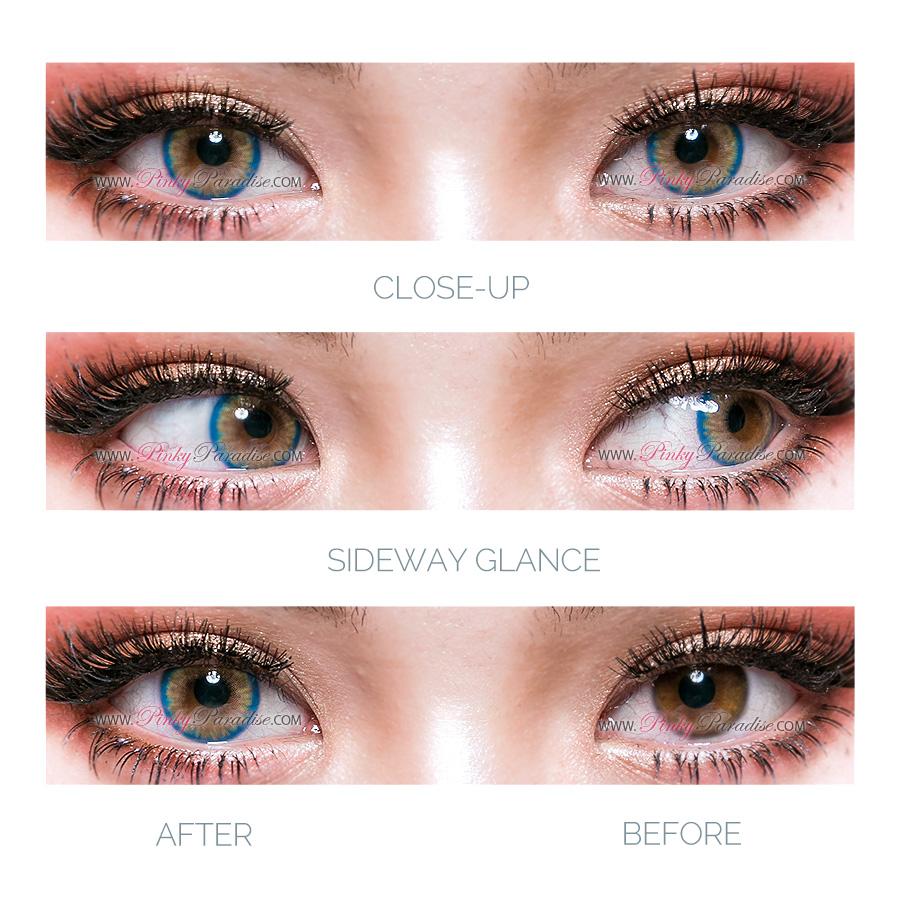
We link primary sources - including studies, scientific references, and statistics - within each article and also list them in the resources section at the bottom of our articles. Medical News Today has strict sourcing guidelines and draws only from peer-reviewed studies, academic research institutions, and medical journals and associations. In others, an eye injury or health problem might cause it. The AAO explain that in people with central heterochromia, the iris has two rings of different colors, while in those with complete heterochromia, one iris is a different color than the other. The two eyes might be completely different from one another, or one part of the iris might be different than the rest. Heterochromia - in which a person has more than one eye color - affects less than 1% of people. They may experience rapid, involuntary eye movements, have higher light sensitivity, or find that their eyes look in two different directions. This lack of pigment causes red or violet eyes.Īs eye pigmentation is important for vision, people with ocular albinism often have problems with their eyesight.Ī person with ocular albinism may have very blurry vision or poor depth perception. People with albinism or ocular albinism usually have little or no melanin in the iris. The light scatters off the collagen in a way that makes the eyes appear gray. People with gray eyes have little or no melanin in their irises, but they have more collagen in a part of the eye called the stroma. GrayĬlose to 3% of the world’s population have gray eyes. In the U.S., where many people descend from ancestors from Ireland and Scotland, about 9% of people have green eyes. However, green eyes are very common in some parts of the world, including Ireland and Scotland. GreenĪn estimated 2% of the world’s population have green eyes, making them very rare overall. People of Asian, Spanish, South American, and South African descent are most likely to have amber eyes. AmberĪmber eyes, which have slightly more melanin than hazel eyes but not as much as brown eyes, account for about 5% of the world’s population. Hazel eyes are more common in North Africa, the Middle East, and Brazil, as well as in people of Spanish heritage. have hazel eyes, which are a mixture of green, orange, and gold. HazelĪpproximately 5% of the world’s population and 18% of people in the U.S. Most people with blue eyes are of European descent. Scientists believe that it is possible to trace all blue-eyed people back to a common ancestor, who likely had a genetic mutation that reduced the amount of melanin in the iris. In the U.S., that proportion is higher, at about 27%. Blue eyesīlue is the second most common eye color globally, with estimates suggesting that 8–10% of people have blue eyes. People with brown eyes are less likely to develop eye cancer, macular degeneration, and diabetic retinopathy than those with lighter colored eyes.īrown-eyed people are, however, more at risk of cataracts as they get older. Nowadays, the AAO note that about half of those living in the United States, and a higher proportion of people in Africa and Asia, have brown eyes. In fact, the American Academy of Ophthalmology (AAO) state that everyone on Earth had brown eyes around 10,000 years ago. Brown eyesĪccording to estimates, 70–79% of the world’s population have brown eyes, making it the most common eye color worldwide. Some people have eyes that are different colors than each other. The second most common color is blue, but people can also have green, gray, amber, or red eyes.

The vast majority of people in the world have brown eyes.


 0 kommentar(er)
0 kommentar(er)
